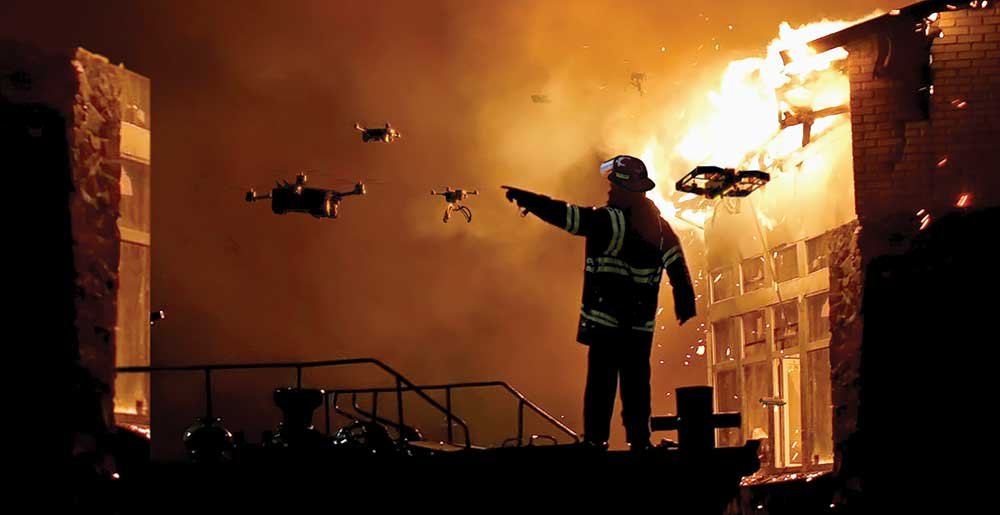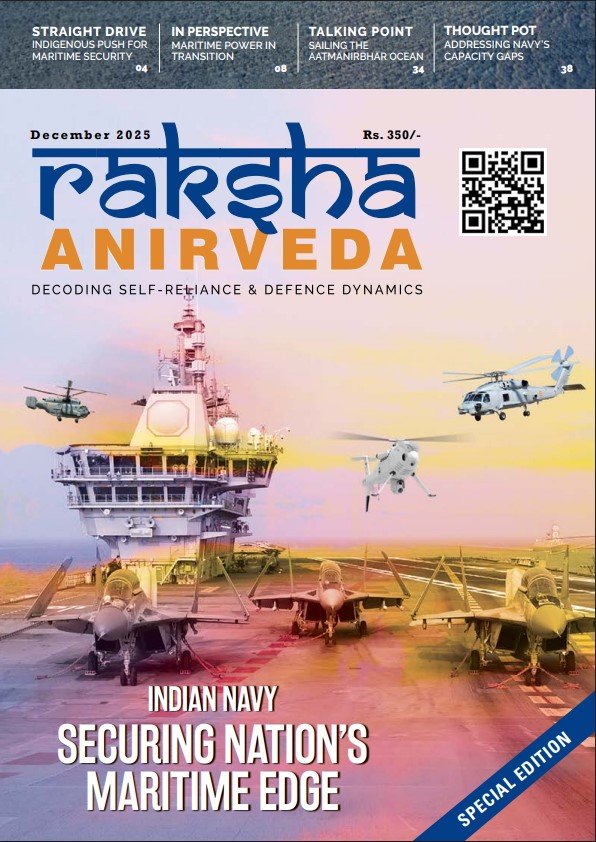Israel, a nation synonymous with technological innovation, has undergone extraordinary advancement in its defence technology sector. This growth has transformed the country into a global hub for cutting-edge defence solutions. Its unique ability to seamlessly blend military and civilian applications has fostered a robust ecosystem encompassing novel technologies, dynamic startups, and globally recognised aerospace and defence enterprises. Amidst profound shifts in the global security landscape, Israel’s defence industry is strategically positioned to address emerging challenges and capitalise on unprecedented opportunities.
According to Startup Nation Central, Israel’s vibrant startup scene pioneers technologies that tackle critical needs in air defence, homeland security, aviation, dual-use applications, space exploration, and beyond. This convergence of innovation has positioned Israel as an exceptionally attractive destination for investors seeking high-quality, groundbreaking opportunities.
Defence tech, at its core, involves the development of advanced equipment and systems tailored for naval, aerial, and ground forces. This includes secure communication networks, electronic intelligence gathering, sophisticated navigation systems, advanced sensors, and signal processing capabilities. Beyond traditional weaponry, innovations extend to enhancing military capabilities in airpower, intelligence dominance, and strategic battlefield advantage.
Israel’s young innovators possess an unparalleled understanding of battlefield needs, transitioning seamlessly from combat to the lab. This intimate knowledge of operational realities drives rapid development and deployment of cutting-edge solutions
Homeland Security (HLS): Homeland security in Israel encompasses a comprehensive suite of measures and technologies designed to protect the nation from both internal and external threats. This includes sophisticated counterterrorism strategies, advanced border security systems employing AI-driven surveillance, robust cyber defence mechanisms safeguarding critical infrastructure, intelligence gathering platforms utilising advanced analytics, rapid emergency response systems enhanced by real-time data, smart city technologies integrating security measures, and advanced law enforcement tools.
Dual-Use Technologies: Dual-use technology refers to equipment, software, and knowledge that can serve both civilian and military purposes. These technologies, often initially developed for civilian applications, can be rapidly adapted for military operations, making them invaluable for national security and capable of addressing diverse defence needs. Prime examples include GPS systems, now integral to military navigation and civilian logistics, and drone technology, which finds applications in both commercial aerial photography and military reconnaissance.

Space Tech: Space technology in Israel involves the design, development, and operation of advanced devices and systems for space travel and exploration, including sophisticated satellites for communication and surveillance, scientific instruments for advanced research, and spacecraft for exploration. Advances in spacecraft design, control systems, power generation, and communication systems are addressing critical industry challenges such as reusability, cost-effectiveness, and accessibility, ensuring Israel’s strategic advantage in space-based technologies.
Unmanned Systems and Robotics: Unmanned systems and robotics in Israel encompass a wide range of autonomous and remotely controlled technologies, including unmanned aerial vehicles (UAVs) for reconnaissance and combat, unmanned ground vehicles (UGVs) for hazardous missions, unmanned surface vehicles (USVs) for maritime surveillance, and advanced robotics for diverse military applications. These systems leverage satellite and spacecraft technologies for data transmission, signal processing, precise location determination, surveillance, and movement control.
Israeli Defence Tech Innovators
TriEye: Revolutionising SWIR (Short-Wave Infrared) sensing for mass-market applications, TriEye’s technology delivers mission-critical imaging and ranging in all weather and lighting conditions. They enable the implementation of SWIR sensors at scale.
X-TEND: Empowering remote operators with AI-assisted tactical robotics, X-TEND’s systems enhance combat effectiveness in complex environments, including GPS and communication-denied zones, offering a range of dynamic battlefield solutions. According to the company working in the toughest environments on earth, such as GPS & COMMS denied situations, its multi-platform solutions enable a broad range of dynamic modern battlefield solutions designed for combat agility, effectiveness, and superiority.
AIROBOTICS: Delivering end-to-end, fully automated UAV systems for on-demand 24/7 aerial data operations, AIROBOTICS’ platform provides comprehensive hardware and software solutions for efficient data capture, distribution, and analytics. The platform includes all hardware and software components required for safe and efficient data capture, distribution, and analytics, and can be implemented in any On-Prem or cloud-based configurations.
KELA: Offering a modular platform that enables militaries to seamlessly integrate new technologies, KELA’s solutions enhance operational capabilities and adapt to evolving combat conditions. The company aims to expand its platform’s deployment to US security agencies and other Western forces. Its platform, which is based on an open and modular architecture, allows militaries to safely and flexibly integrate new technologies without having to make significant changes to their current systems.
AXON VISION: Providing real-time, AI-based decision-making solutions, AXON VISION’s systems enhance situational awareness for commanders operating with closed hatches, reducing cognitive load and maximising vehicle lethality and survivability. The product is a modular system contains AI clusters (Day/Night Camera, GPU and AI algorithm) and central unit.
HIGH LANDER: Developing the Vega UTM, a fully autonomous software solution for real-time airspace awareness, HIGH LANDER coordinates crewed and uncrewed aerial activity, providing a consolidated view of the sky and enabling tactical deconfliction. It coordinates disparate drone fleets and traditional air traffic at any scale, providing a real-time view of every-thing airborne.
Sources within the defence industry, speaking with Raksha Anirveda, emphasise the unique advantage held by Israeli defence startups. “The young entrepreneurs who establish and run these startups are often reservists in the Israel Defense Forces (IDF),” one source explained. ‘’They transition seamlessly – one day they serve in elite units that use the type of systems they develop and the next day, they are in the lab understanding exactly what the forces in combat need. The results are phenomenal and the upgrades are also based on the combat experience of the developers,” the source added.

The Israeli Ministry of Defense (IMOD) plays a pivotal role in supporting these startups. An IMOD official told Raksha Anirveda that collaboration between the ministry and the defense startup ecosystem has significantly increased, particularly during the “Swords of Iron” conflict. “The Directorate of Defence Research & Development (DDR&D) has spearheaded a strategic initiative to integrate open innovation, accelerating the adoption of cutting-edge technologies within combat forces,” the official stated. “Before the war, the ministry worked with approximately 200 startups. Since then, that number has grown by over 50 per cent, with more than 300 active startups and over 100 providing operational solutions on the battlefield.”
Initiatives such as the Innofense and Innotal acceleration programs, the “Green Track” for rapid startup collaboration, and extensive partnerships with the private sector and venture capital funds are further accelerating this growth. The integration of artificial intelligence, autonomous systems, and advanced sensors has yielded dramatic real-time improvements, showcasing Israel’s unique ability to innovate, develop, and deploy critical technological solutions under combat conditions.
-The writer is an Israel-based freelance journalist. The views expressed are of the writer and do not necessarily reflect the views of Raksha Anirveda






